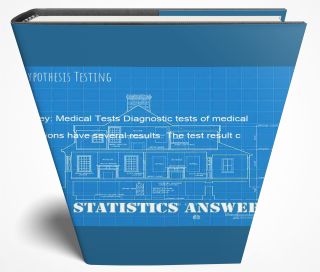Survey: Medical Tests Diagnostic tests of medical conditions have several results. The test result c
Question: Survey: Medical Tests
Diagnostic tests of medical conditions have several results. The test result can be positive or negative, whether or not a patient has the condition. A positive (+) test indicates the patient has the condition. A negative test (-) indicates the patient does not have the condition. Remember, a positive test does not prove the patient has the condition. Additional medical work may be required. Consider a random sample of 200 patients, some of whom have a medical condition and some of whom do not. Results of a new diagnostic test for the condition are shown.
| Condition Present | Condition Absent | Row Total | |
| Test Result + | 110 | 20 | 130 |
| Test Result - | 20 | 50 | 70 |
| Column Total | 130 | 70 | 200 |
Assume the sample is representative of the entire population. For a person selected at random, compute the following probabilities:
a.) P (+, given condition present); this is known as the sensitivity of a test
b.) P (- , given condition present); this is known as the false-negative rate
c.) P (- , given condition absent); this is known as the specificity of a test.
d.) P (+, given condition absent); this is known as the false-positive rate.
e.) P (condition present and +); this is the predictive value of the test.
f.) P (condition present and -).
Deliverable: Word Document



![[Solved] Regression is a statistical method used to describe the nature of the relationship between variables #20010 Hypothesis Testing - T test](/images/downloads-images/featured/Statistics-question-25545.jpg)

![[Solution] Describe what is measured by the estimated standard error in the bottom of the independent measures #18823 Hypothesis Testing](/images/downloads-images/featured/Statistics-question-1314.jpg)

